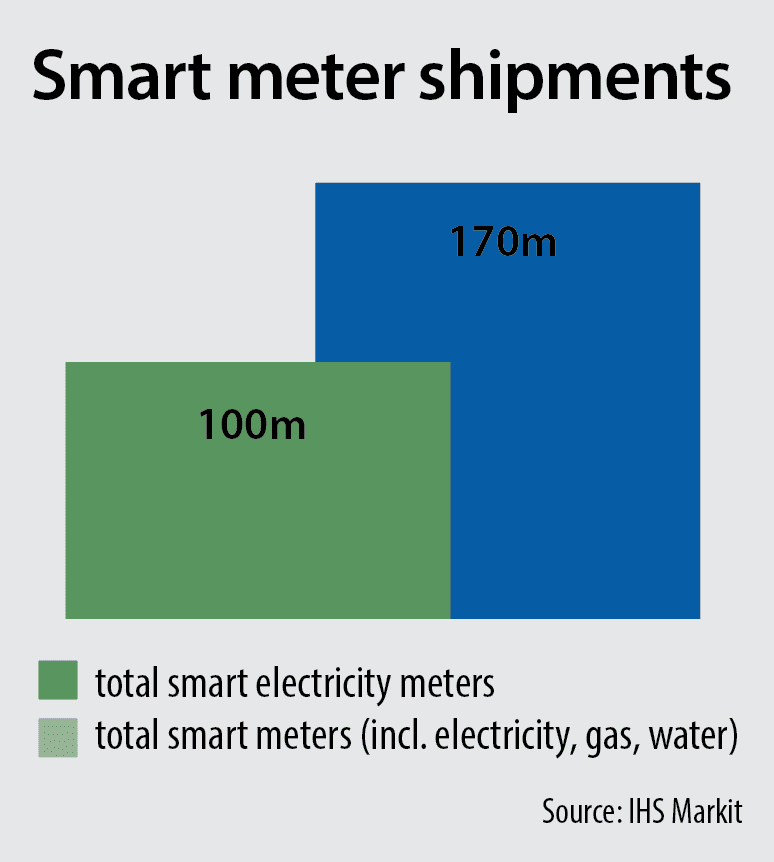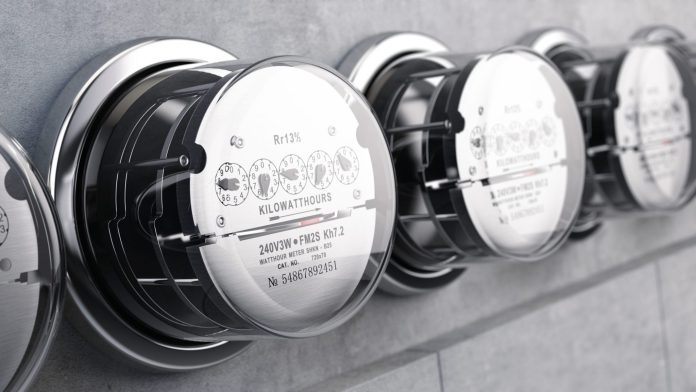Smart meters have provided a read-out on energy consumption and a window on energy usage. They have brought insight and control to the field of energy management, both sides of the meter. They are, in a sense, the gateway devices for these concepts of a smart grid and an energy internet.
“Smart meters are the foundational building blocks for all of these other capabilities. Once you have data, providing visibility of consumption, you can start to influence energy usage and grid management,” says Adarsh Krishnan, principal analyst at ABI Research.

Smart electricity meters are hardly new, getting their first start in Italy back in the early 2000s. Shipments are flowing, passing 100 million units for the first time in 2017, compared with total meter shipments of 170 million, according to IHS Markit. The number of new smart electricity meters in Europe alone reached 22.2 million units in 2018, says Berg Insight.
And most of the growth is elsewhere, says ABI – in China notably, tracking for 350-400 million deployments in the next five years.
“Industrial and commercial customers have been connected forever. What we’re seeing now is a move to connect the last metering codes (eight and nine), which cover residential markets,” says Phil Skipper, head of IoT development at Vodafone.
On the demand-side, the point is to give energy consumers information to make informed decisions about their usage, and the impetus to switch providers and drive competition. “That process has been quite complicated. Smart metering brings all the data back to the centre. It streamlines change of occupancy, supplier, and address,” adds Skipper.
The home is where the heart of the action is, and the meter is a pump for energy data. There is a parallel with the broadcast market, notes Skipper, where infrastructure has been shrunk into edge hardware and cloud software in digital televisions and set-top-boxes. “You used to have expensive transmitters and cheap receivers. It has gone the other way.”
The ‘smarts’ in energy management are at the point of use, in basements and in under-stairs cupboards. Advanced metering infrastructure (AMI) establishes an integrated system of meter hardware, communications networks, and data management systems that enables two-way communication between utilities and customers.
With localised power generation, the flow of electricity and data has to go both ways – so the grid can also run backwards.
“What used to be uni-directional communication between the meter and the head-end is becoming bi-directional. Even the grid itself is becoming bi-directional. We are seeing electricity moving from household back into the grid, which means a whole set of new infrastructure,” says Krishnan.
The flip-side of this demand-side gadgetry is to bring dynamic control to grid management, and drag energy providers into a new digital era. “The main driver [for smart meters], really, is to help utilities digitise,” says Skipper. “It becomes even more critical when you have storage in the network, and the grid becomes asynchronous.”
This need for intelligent automation – beyond the supervisory control and data acquisition (SCADA) systems that have propped up the grid for decades – is urgent, as the energy sector seeks to decarbonise and decentralise. These trends bring volatility to energy supply – because green power is intermittent, governed by the elements, and distributed power requires smarter orchestration.
Electricity is here, and it’s gone, and production is scattered. As well as the meter itself, and in-home displays and thermostats, which make users active in energy management, the task to harness the wind and sun requires panels and turbines for generation, and new battery storage systems in order to combat the changeable weather.
This article, continued here, is a serialised excerpt from a new editorial report from Enterprise IoT Insights, called Keeping The Lights On – With Green Power, which looks at development of IoT technologies in the energy market. The full report, free to download, can be found here.

